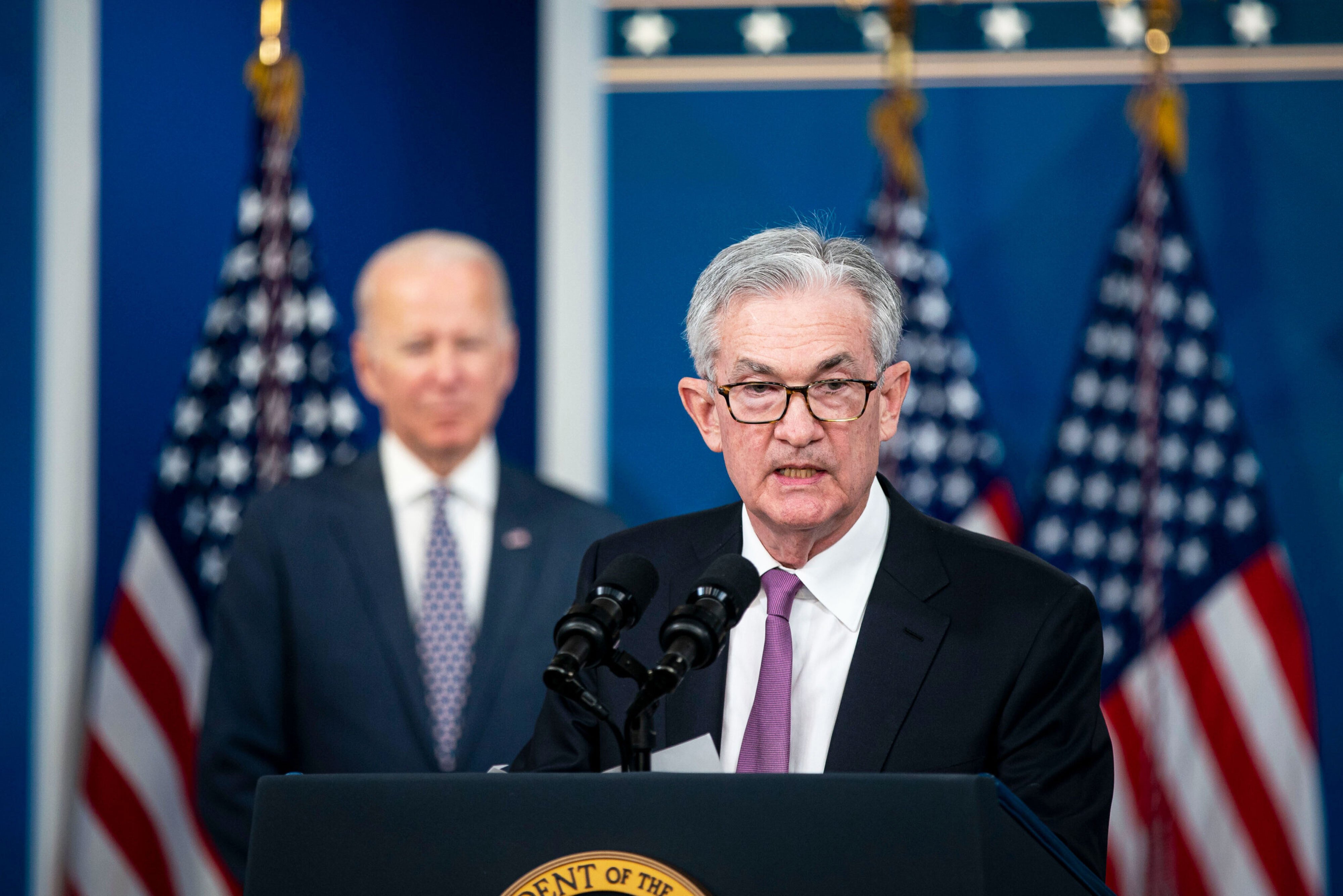
Image from The New York Times
KEY POINTS
- The US Federal Reserve has indicated it is winning the war against inflation and is factoring in three rate cuts next year
- Other major central banks have either cut or kept rates on hold, indicating they are more confident about the prospects of keeping inflation in check
- Money markets believe this good news on global inflation bodes well for the RBA to cut rates in Australia next year
Australian residential property has had an extraordinary 2023, with buyers shrugging off no less than 13 interest rate hikes from the Reserve Bank to drive home values to a new national high in late November.
High population growth, soaring rents and low supply outweighed much steeper mortgage payments.
Most analysts, however, predict that while prices in most markets are unlikely to go backwards in 2024, growth will be a lot more subdued.
“Combined with an expectation that interest rates could hold higher for longer, households are likely to see their budgets further stretched, and more households may fall into acute financial stress”, property analyst CoreLogic said in its recent end-of-year wrap-up.
But what if interest rates don’t “hold higher for longer”?
Is this a game-changer?
Late last week, stock markets around the world rallied, following a decision by the US Federal Reserve to leave rates on hold in the 5.25-5.5% range.
But it wasn’t so much the decision not to increase rates further that sent a wave of Christmas cheer through global markets, but rather what the Fed Reserve Chair Jerome Powell said:
“We are seeing strong growth that is — that is — appears to be moderating.”
“We're seeing a labour market that is coming back into balance by so many measures, and we're seeing inflation making real progress.”
“These are the things we have been wanting to see.”
Those comments may seem bland at face value, but to economists, they signalled an important message.
“The fight against inflation is a global one”, says former Australian Treasury economist Chris Richardson.
“The US is in the lead and over there they're starting to think they've won the war.”
“
"tide of higher inflation and higher interest rates is
now starting to recede"
AMP Chief Economist Shane Oliver
AMP Chief Economist Shane Oliver says the “tide of higher inflation and higher interest rates is now starting to recede”, and the Federal Reserve “has started to discuss rate cuts, and its dot plot of Fed officials’ interest rate forecasts is now allowing for three rate cuts next year.”

And it’s not only the Fed “pivoting” as economists like to say, towards a more “dovish” stance.
“The past week saw a raft of central banks – the Fed, the ECB (European Central Bank), the BoE (Bank of England) along with central banks in Switzerland, the Philippines and Taiwan – all leave interest rates on hold….. and the Brazilian central bank cut rates. It’s now looking almost certain that rates have peaked in major central banks, and they are moving towards rate cuts”, says AMP’s Shane Oliver.
“This is all being driven by the ongoing fall in inflation, with US CPI inflation falling again in the last week and a bigger than expected fall in producer price inflation.”
What does this mean for Australia?
Almost certainly interest rates will be cut next year.
“Our base case remains that the cash rate has peaked and that the RBA will start cutting rates mid-next year taking the cash rate down to 3.6% by end 2024”, says AMP’s Shane Oliver.
Chris Richardson is more guarded, saying 2024 will still be a “grind” for Australian households, but “it's increasingly likely that we get rate cuts in Australia within the next year.”
And interestingly the people that are betting huge amounts on the future of interest rates in Australia - money market traders - have changed their tune since the last US Fed rate decision.

This is a graph of the implied yields on 30-day futures trades on the Overnight Cash Rate at the close of the market on the 15th of December.
Historically, the Overnight Cash Rate has generally been the same as the RBA’s Official Cash Rate.
The money markets are now betting that the “implied yield” will be 3.84% in a year from now.
Just two weeks ago, they were factoring in 4.2% in December next year, which was almost unchanged from the current cash rate of 4.35%.
What about property?
Many households with mortgages in Australia have been able to weather the storm of higher inflation and higher mortgage rates because of the huge savings buffers they built up during COVID-19 - $300 billion, according to the RBA.
But there’s evidence those buffers may be largely depleted, with CoreLogic pointing to ABS national accounts data for the September quarter which showed the lowest household savings rate since the 2007-09 GFC at just 1.1%
Lower interest rates will likely help restore consumers’ bank balances and confidence.
And that confidence is likely to flow through to the property market, with would-be buyers more optimistic about their ability to service loans.
“Treasury expects inflation to moderate further,” says Federal Treasurer Jim Chalmers, and “they expect wages to grow.”
With the war being won against global inflation, growing market expectations of rate cuts and growing pay packets, many Australians who believed they might have been priced out of the property market in 2024 might just have been given an early Christmas present.
Stay Up to Date
with the Latest Australian Property News, Insights & Education.




.png?width=292&height=292&name=Copy%20Link%20(1).png)
 SIGN UP FOR FREE NEWSLETTER
SIGN UP FOR FREE NEWSLETTER








.jpg?width=1920&height=1080&name=Warning%2c%20You%20Might%20Be%20Facing%20Higher%20Taxes%20Soon%20(1).jpg)





.png?width=1920&height=1080&name=Rate%20Drops%20Signal%20BIGGEST%20Property%20Boom%20in%20DECADES%20(1).png)

.jpg?width=1920&height=1080&name=Labor%20vs%20Liberal%20These%20Housing%20Policies%20Could%20Change%20the%20Property%20Market%20Forever%20(1).jpg)
.jpg?width=1920&height=1080&name=QLD%20Slashes%20Stamp%20Duty%20Big%20News%20for%20Investors%20%26%20Home%20Buyers%20(1).jpg)
.jpg?width=1920&height=1080&name=Trump%20Just%20Slapped%20Tariffs%20%E2%80%93%20Here%E2%80%99s%20What%20It%20Means%20for%20Australia%20(1).jpg)
.jpg?width=1920&height=1080&name=Federal%20Budget%202025%20More%20Debt%2c%20No%20Housing%20%E2%80%93%20Here%E2%80%99s%20What%20You%20Need%20to%20Know%20(1).jpg)
.jpg?width=1920&height=1080&name=Australias%20Housing%20Crisis%20is%20about%20to%20get%20MUCH%20Worse%20(New%20Data%20Warns).jpg)
%20(1).jpg?width=1920&height=1080&name=Australias%20RENTAL%20CRISIS%20Hits%20ROCK%20BOTTOM!%20(2025%20Update)%20(1).jpg)
%20(1).png?width=1920&height=1080&name=Is%20Adelaide%20Still%20a%20Good%20Property%20Investment%20(2025%20UPDATE)%20(1).png)
.jpg?width=1920&height=1080&name=RBA%20Shocks%20with%20Rate%20Cuts!%20What%E2%80%99s%20Next%20for%20Property%20Investors%20(1).jpg)
%20(1).jpg?width=1920&height=1080&name=I%20Predict%20The%20Feb%20Rate%20Cut%20(My%20Price%20Growth%20Prediction)%20(1).jpg)
.png?width=1920&height=1080&name=Why%20Property%20Prices%20Will%20Rise%20in%202025%20Market%20Predictions%20(1).png)
.jpg?width=1920&height=1080&name=Why%20Investors%20Are%20Choosing%20Apartments%20Over%20Houses%202%20(1).jpg)
.jpg?width=1920&height=1080&name=Why%20Rate%20Cuts%20Will%20Trigger%20A%20Property%20Boom%20(1).jpg)
.jpg?width=1920&height=1080&name=Retire%20On%202Million%20With%20One%20Property%20(Using%20SMSF).jpg)
.jpg?width=1920&height=1080&name=4%20Reasons%20Why%20You%20Should%20Invest%20in%20Melbourne%20Now%20(1).jpg)
%20(1).jpg?width=1920&height=1080&name=Old%20Property%20vs%20New%20Property%20(Facts%20and%20Figures%20Revealed)%20(1).jpg)
%20(1).jpg?width=1920&height=1080&name=Will%20The%20New%20QLD%20Govt%20Create%20a%20Property%20Boom%20or%20Bust%20(My%20Prediction)%20(1).jpg)
%20Scott%20Kuru%20(1).jpg?width=1920&height=1080&name=Inflation%20Hits%20Three-Year%20Low%20(Will%20RBA%20Cut%20Rates%20Soon)%20Scott%20Kuru%20(1).jpg)
.jpg?width=1920&height=1080&name=How%20to%20Buy%20Investment%20Property%20Through%20SMSF_%20The%20Ultimate%20Guide%20(1).jpg)
.jpg?width=1920&height=1080&name=Victoria%20Slashes%20Stamp%20Duty%20Melbourne%20Set%20to%20Boom%20Scott%20Kuru%20(1).jpg)
.png?width=1571&height=861&name=Are%20Foreign%20Buyers%20Really%20Driving%20Up%20Australian%20Property%20Prices%20(1).png)
.jpg?width=1920&height=1080&name=The%20Single%20Factor%20That%20Predicts%20Property%20Growth%20Regions%20(1).jpg)
%20Scott%20Kuru%20(1).jpg?width=1920&height=1080&name=My%20Prediction%20On%20Rates%20%26%20Negative%20Gearing%20(Market%20Crash)%20Scott%20Kuru%20(1).jpg)

-1.png?width=1920&height=1080&name=Major%20Banks%20Cut%20Rates%20Will%20RBA%20Follow%20Suit%20(Sept%20Rate%20Update)-1.png)
%20Scott%20Kuru-1.png?width=1920&height=1080&name=Rate%20Cut%20Coming%20What%20New%20Zealands%20Move%20Means%20for%20Australia%20(Sept%20Prediction)%20Scott%20Kuru-1.png)
%20(1).jpg?width=1920&height=1080&name=Buy%20when%20the%20interest%20rates%20are%20high!%20(Why%20you%20must%20buy%20now!)%20(1).jpg)
.jpg?width=1920&height=1080&name=Carms_Revised%20Taxes%20Due%20Aug%209%20YT%20Thumbnail02%20(1).jpg)
.jpg?width=1920&height=1080&name=Carms_Too%20Little%20Too%20Late%20Aug%207%20YT%20Thumbnail01%20(1).jpg)









.jpg?width=1920&height=1080&name=Carms_Rate%20Drop%20In%20July%20Jun%2010%20YT%20Thumbnail02%20(1).jpg)
.jpg?width=1920&height=1080&name=Carms_Own%20a%20Property%20V6%20Jun%205_YT%20Thumbnail%20(1).jpg)









.png?width=1920&height=1080&name=Artboard%201%20(3).png)






.jpg?width=1920&height=1080&name=YT%20thumbnail%20%20(1).jpg)

